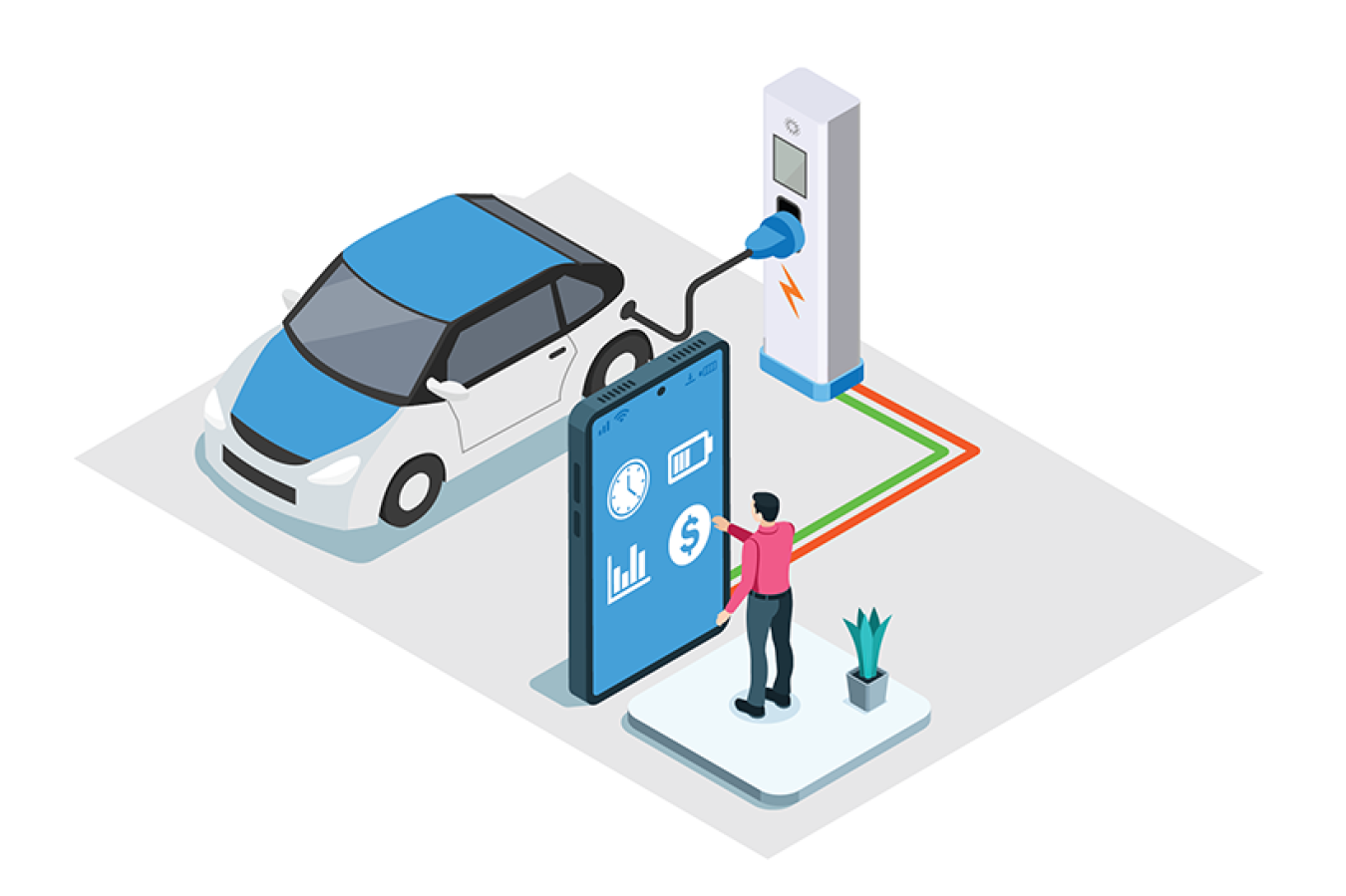Managed electric vehicle (EV) charging allows federal fleets to strategically plan and control vehicle charging events and mitigate a variety of costs for fleets of any size, and for larger fleets in particular. As the adoption of EVs accelerates across the globe, a new set of challenges emerge for fleet operators, utilities, and power grids to cater to widespread EV and EV charging station deployments. The increasing energy demand from EV charging risks overloading electrical infrastructure, potentially causing grid instability and higher energy-related operational costs and necessitating expensive upgrades.
Unmanaged EV Charging
Uncontrolled or unmanaged charging is when EVs start charging as soon as they are plugged in without considering factors such as electricity cost, grid capacity, overall energy demand, and other factors. This approach, while simple, can pose several challenges to fleet electrification:
- Higher energy costs when charging occurs during peak pricing hours
- Higher demand charge costs when charging occurs during facility peak demand
- Increased capital cost to upgrade infrastructure to support a higher potential peak load
- Grid capacity limitations that cannot meet the needs of larger fleets.
Moreover, uncoordinated charging patterns can result in inefficient energy use, missed opportunities for utilizing renewable energy utilization, and difficulties in managing large EV fleets.
Managed EV Charging
Managed EV charging refers to the strategic control of when and how vehicles are charged without compromising the fleets' operational needs. Managed charging balances energy needs among EVs, buildings, and grids through sophisticated communication and defined control objectives.
Control Objective: Also referred to as the objective function, control objectives dictate the operations and control approach to managed charging. Example objectives:
- Avoid charging during higher peak pricing
- Avoid increasing demand charges by reducing coincidence with facility loads
- Enforce a power ceiling between multiple EVSE to mitigate the need for upgraded equipment.
Albeit various complexity levels, even the most fundamental managed charging approach can provide significant benefits over unmanaged charging such as reduced operational cost. Primarily, managed charging can be implemented in two ways:
User Planning

Figure 1. The user planning approach to managed EV charging requires the EV operator, fleet operator, or grid operator to manually schedule vehicle charging. Illustration by Fred Zietz, NREL.
The first approach depends on the functionalities embedded in the EV charging station applications (if networked) or within the EV configuration settings through the EV's phone app or dashboard. Due to the structure of this approach, these solutions are only able to take static inputs from both the EV and energy considerations. While potentially less expensive, the static nature of these inputs requires the user to program specific EV charging schedules manually within the EV charging station or EV (Figure 1). As a result, if vehicle operations change frequently, or the schedule of peak and off-peak pricing changes, staff must update the EV or charger load management schedule accordingly.
An example of this approach is scheduling charging sessions to follow a utility Time of Use (TOU) rate program to reduce operating costs. This would require each EV or charger to be programmed to charge when costs are low during off-peak periods to ensure each EV has enough time to charge for their next day’s operations, accounting for differences in arrival and departure times. This can potentially save the site money by recharging the EVs when energy pricing (dollars per kilowatt-hour) is cheaper, and potentially reduce peak demand charges, if applicable.
Smart Charge Management

Figure 2. Smart charge management includes data and power connections between EVs, EVSE, buildings, and the grid. Illustration by Fred Zietz, NREL.
The smart charge management methodology provides "smart" capabilities that can respond to dynamic and changing conditions on the EV and energy side by utilizing networked charging units that support communication protocols to coordinate EV and energy needs. These networked charging units can adjust charging power levels or shift EV charging sessions based on changing factors such as vehicle operation schedules, dynamic utility rates, equipment capacity, and building loads. Due to its capability to shift loads, this is also referred to as dynamic or adaptive smart charge management. Learn more about the benefits of smart charge management.
Networked EVs and Charging Stations: An EV or EV charging station that is connected to a communication network to allow data exchange, charge session monitoring, or control of charging power.
Benefits of Managed EV Charging
Implementing managed charging for federal fleets can yield several advantages:
- Reduces EV charger installation costs and timelines by mitigating costly upgrades
- Reduces charging electricity costs by avoiding peak pricing or demand charges
- Optimizes fleet operations to ensure each vehicle receives the energy it needs
- Supports loads during extreme events.
Learn more about the benefits of smart charge management.
Conclusion
As federal agencies continue to electrify their fleets, managed EV charging will play an increasingly important role in reducing EV charging equipment installation costs, providing more efficient fleet operations, and lowering charging costs optimized with facility operations. By understanding and implementing these strategies, agencies can maximize the benefits of their transition to EVs.

